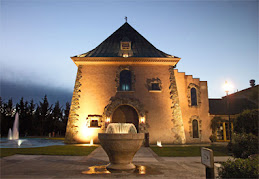Sustainability can be an elusive concept. At the recent Capitalism Next Sustainable Design panel, Ted Howes, Sustainability Lead at Ideo, challenged us to bring 30 sustainability leaders into a room, ask them to define sustainability, and find less than 30 different definitions. But, one story that Mr. Howes told really resonated with me. One of the legendary success stories at Ideo, which I have heard several times before, is the design of a bestselling child’s tooth brush in 1991. Noticing that children put their whole fist around their toothbrushes, Ideo designed the first big, fat toothbrush so that children could better grip on their toothbrush than with a smaller version of the adult one. Their design was the top selling toothbrush for 18 months and has since been imitated by many other toothbrush manufacturers. For the designer of this toothbrush, however, the concept of sustainability hit home on a vacation in Mexico when during a walk on the beach, a big, round plastic child’s toothbrush washed ashore. While it can be a challenge to define sustainability with words, like the designer of Ideo’s toothbrush, we all have moments where we realize the impact we have on the world around us.
Though a common definition of sustainability may elude us, I heard three words echoed frequently by the panelists as they discussed sustainable design: transparent, desirable, and invisible. Though working for different organizations on a variety of types of products, Damien Huang, VP of Design for Patagonia, Bryant Bainbridge, Director of Nike Considered, and Ted Howes, Sustainability Lead at Ideo, echoed many similar concepts in their discussion of sustainability.
TransparentFirst, sustainable design requires transparency. Companies should communicate information about product lifecycles and document the tradeoffs made in its design and production to customers. For example, one way Patagonia creates transparency is through its Footprint Chronicles, an area of the site that tracks the environmental footprint of selected products. Patagonia acknowledges that difficult tradeoffs frequently occur and even highlights areas of its value chain where it lacks sustainability.
The sustainability of a product also involves its entire lifecycle. Mr. Howes gave the example of companies choosing one less harmful component and wanting to brand their entire product with a “green” sticker. Select companies are really just beginning to look at their entire value chains starting with the upstream chemistry of their products. Nike has created tools and metrics to analyze the complex upstream footprint of each product from its multitude of suppliers. Closer partnerships with vendors can help to create this transparency. A large company like Nike and smaller organizations like Patagonia both play critical roles in creating these partnerships. Patagonia is on the front-line bringing up the conversation about new ways to be sustainable with vendors. Nike is large enough to drive big changes with their suppliers. In addition, organizations should not neglect considerations about the end of the product life. Patagonia, for example, has launched the Common Threads, to make its products recyclable, allowing consumers to return used products to their stores for recycling.
InvisibleSecondly, at the same time sustainability must be transparent so that stakeholders can see and understand the value chain, sustainability must also be invisible. Sustainable products must be well designed, performing as well or better than their non-sustainable counterparts. Companies should be able to sell product even if customer did not know it was “sustainable.” At Patagonia, designers assume that the customer will not pay a premium for sustainability, and that its other attributes will sell the product. After the session, I compared the price of an organic cotton dress at Patagonia to a comparable cotton dress at J.Crew without organic cotton and found the dresses to be very similarly priced. (The Patagonia Netty dress is $85, and J.Crew's Cabana dress is $78. J.Crew also sells non-organic cotton dresses for as much as $118.)
Ted Howes gave an example of a sustainable product with poor design, which has received criticism from consumers. Walmart’s new milk carton saves significant energy and resources. However, despite saving money on each gallon, consumers are struggling to be able to pour milk from the new containers. To achieve maximum success, sustainable products should function as well as non-sustainable alternatives. Because good sustainable design must be “invisible,” Ideo even sometimes makes changes to improve sustainability of new products without telling its clients.
 Desirable
DesirableFinally, when companies communicate the value proposition of sustainability products to consumers they should emphasize desirability rather than fear. Companies should avoid scare tactics, and instead appeal to customers with a value proposition based on the products many attributes, of which sustainability is only one. Companies should even communicate a better value proposition than financial ROI by creating new business or product models to simplify the lives of their customers. After the session, I tried to learn more about how Nike is making their sustainable products desirable to consumers. It seems that they have continued their tradition of athlete sponsorship of with their sustainable products. For example, Steve Nash, All-Star guard of the Phoenix Suns, is wearing Nike’s “Trash Talk” shoe. What sports fan wouldn’t desire a product worn by world-class athletes?
 Challenges
ChallengesCompanies and consumers should remember that the pursuit sustainability for consumer goods is a complex and evolving process. Sometimes the choices designers must face in pursuit of sustainability are not black and white. For example, Mr. Bainbridge told a story of a soccer ball factory in Pakistan. When U.S. management learned that minors were employed by this factory, a large fence was installed and employees were more closely screened for age requirements. Because the impoverished families of these children still needed them to work, they found jobs in the only other local employer, a manufacturer of heavy metal parts. Children soon began to lose their hands in metal presses. So it seems in our pursuit of sustainability and social responsibility, the choices are not always so clear.
Towards the end of the session, Mr. Howes said something that really struck me. “The word sustainability has had its day. Let’s use a word like
impact- equally powerful, less squishy.” I believe the words transparency, invisibility, and desirability are also powerful. Thank you to our excellent panelists for providing UC Berkeley students with powerful words to us in our pursuit of sustainability.
--Lauren










